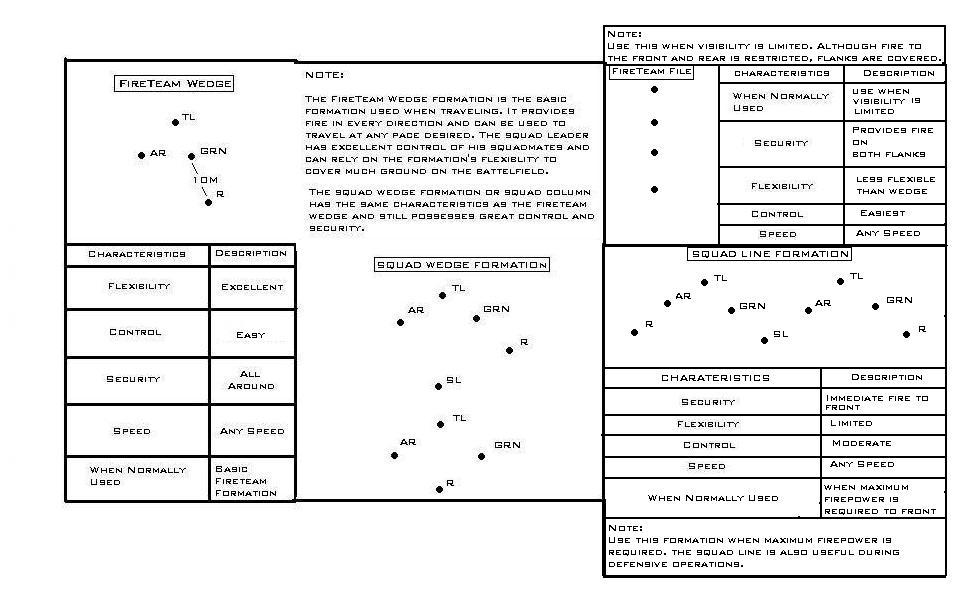To begin, allow me to
explain the importance of which type of formation to select when traveling.Leaders must
consider a few factors when deciding what formation to choose while traveling with your squad or platoon.
First, they must understand the discrepancy
between a fireteam, squad, and a platoon. A platoon consists of at least three fireteams, while a squad consists
of two fireteams at most. A fireteams consists of 4-5 people.
Platoon formations are to be created
during open warfare or large-scale warfare. Squad formations are used during small operations, or a platoon is divided
into separate fireteams throughout the theatre of war. Fireteams are created to accomplish tasks while avoiding little notice,
or merely to cover further ground.
The formations below are the most common, but effective formations used during combat. They
are only fireteam and squad formations. Platoon formations are listed on the second page of Maneuvers. Review the list of
abbreviations to understand the chart easier.
PLT- Platoon Leader (used in platoon formations only)
SIC- Second In Command (used in platoon formations only)
SL- Squad Leader
TL- Team Leader
AR- Automatic Rifleman/Gunner
GRN- Grenadier/Demolition
R- Rifleman
Riflemen should be placed at the rear of the selected formation and ten meters apart from the grenadier
while traveling.

